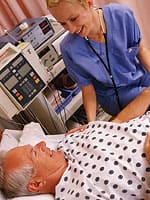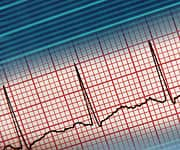Life Extension Magazine®
Q: I recently had a cholesterol profile blood test and learned that I may be at risk of heart disease because my levels of beneficial HDL (high-density lipoprotein) are too low. I read that niacin could help increase my HDL, but my doctor said niacin is dangerous. Whom should I believe? A: Your doctor would be right—if we were still living in 1985. Since then, however, we have learned how to use niacin (vitamin B3) safely and effectively. Unfortunately, many physicians have not yet caught up, or are still trapped by the idea that cholesterol-lowering statin drugs are the only way to decrease cardiovascular disease risk. I have personally prescribed niacin for thousands of patients as part of our program to reverse coronary disease. In fact, niacin is the closest thing we have available to a perfect treatment that corrects most of the causes of coronary heart disease. Niacin, also known as "nicotinic acid," is found in red meat, chicken, turkey, beans, and grains. It is a required nutrient and a member of the B vitamin family. Have you ever taken a B-complex vitamin pill that triggered a strange burning sensation of the skin? If so, that was the niacin you experienced. Niacin plays a crucial role in energy production, gene expression, and hormone synthesis. Humans cannot exist without it. What you need to knowNiacin (vitamin B3) is the most important vitamin for maintaining a healthy lipid profile. Due to a lack of keeping up with new published literature, physicians have been slow to recommend it. The recommended dietary allowance (RDA) of niacin only serves to prevent pellagra. However, dosages much higher produce significant reductions in more harmful forms of cholesterol and triglycerides with increases in more beneficial cholesterol. Results from a clinical trial with 160 participants reveal that niacin combined with a statin drug reduces heart attack occurrence and death by 90 percent. Niacin can exist in an immediate-release and extended-release form. An immediate-release form may provoke a harmless hot flush that is generally well tolerated. The extended-release form offers fewer hot flushes. This article will discuss the research on niacin and its optimal use. The recommended dietary allowance (RDA) of niacin to prevent pellagra (a disease caused by vitamin B3 deficiency and characterized by diarrhea, dermatitis, dementia, and possible death) is 16 mg a day for males and 14 mg for females. Pellagra induced by niacin deficiency was widespread in the United States during the nineteenth century, but is now long forgotten and rarely seen. When taken at doses greater than the RDA, niacin confers an array of health benefits. Niacin:
Niacin blocks the release of fatty acids from fat cells. Fewer fatty acids are passed through to the liver, resulting in fewer VLDL particles. Less VLDL leads to less small LDL and higher HDL.1 Niacin also improves endothelial function and nitric oxide synthase activity. Niacin's benefits are not limited to its influence on blood markers of cardiovascular disease risk. It also reduces heart attack risk dramatically. The Coronary Drug Project was the first to establish that niacin is a powerful agent in lowering heart attack risk. When more than 1,000 heart attack survivors were given 3000 mg of (immediate-release/crystalline) niacin daily for six years, the incidence of recurrent non-fatal heart attacks was reduced by 27%, and the number of strokes was reduced by 26%.2
In the well-known HDL-Atherosclerosis Treatment Study (HATS), 160 participants were given niacin and simvastatin (Zocor®) or a placebo. Compared to the placebo group, the group receiving niacin and simvastatin experienced a 90% reduction in death and myocardial infarction over three years.3 In other words, coronary events were nearly eliminated. Although the study sample was small, its results are striking. By comparison, statin drugs alone typically reduce heart attack risk by 25-35%. The 90% reduction achieved in the HATS trial thus is truly remarkable. Despite niacin's track record, many physicians have never learned how to use it effectively. Statin drugs have caused many physicians to forget how effective niacin can be. This is a shame, because niacin can be a powerful agent in combating heart disease, when used alone or in combination with other treatments (especially fish oil). Niacin's safety record is equally impressive. However, a brief foray into the use of very-slow-release niacin preparations in the 1980s taught us an important lesson: niacin is very safe, if the liver is exposed to it for only a few hours at a time. Niacin is, after all, just vitamin B3. However, 24-hour, day-after-day exposure to niacin over an extended period can be toxic to the liver. Thus, the very-slow-release niacin preparations that yielded sustained, high blood levels of niacin caused liver toxicity in 10-20% of people who used these preparations in the 1980s. Unfortunately, this learning experience left some physicians fearful of recommending niacin to their patients. For this reason, very-slow-release niacin should be avoided. There are two safe forms of niacin:
By contrast, slow-release niacin preparations reduce the hot-flush effect by releasing niacin over an extended period of 12 hours or longer. Most of these preparations are unsafe and I do not recommend them. "No-flush" niacin preparations, such as inositol hexaniacinate and nicotinamide, are widely sold as niacin alternatives that do not cause hot flushes. In my experience, however, they simply do not work. In other words, no flush, no effect. The correct dose of niacin depends on what abnormality you and your doctor are trying to correct. To raise HDL and correct small LDL, a dose of 750-1000 mg a day usually provides full benefit. Increasing this dose to 1500 mg a day may provide slightly greater benefit. To reduce LDL or Lp(a), higher doses (from 1000 mg up to 4000-5000 mg per day) are often used, with higher doses providing greater effects. However, doses this high should be taken only with a physician's supervision. Keep in mind that it may take three months or longer to realize the full lipid-optimizing benefits of niacin. As previously noted, the one common though generally harmless side effect of taking niacin use is hot flushes. Some people find them bothersome enough that they want to flush the niacin down the toilet! The flush, which feels like blushing when one is embarrassed, is usually accompanied by a prickly sensation over the face, neck, and chest. Some women say it feels like the hot flashes of menopause. These flushes are usually short-lived, lasting no more than 20 minutes. Tolerance to this effect occurs with continued niacin use, usually after a few weeks or months. You may experience flushing at the start of your niacin program as well as when you increase your dose. In rare cases, a more marked flushing reaction may occur, resembling a rash or hives. If this occurs, speak to your doctor about whether you should continue using niacin. You can employ several strategies to greatly minimize or even eliminate niacin-induced hot flushes:
Niacin may raise blood sugar by about 4-5 mg/dL at the beginning of therapy. This increase usually dissipates over a few months, and is rarely clinically important. However, increases in blood sugar may be greater if you already have high blood sugar or diabetes. For this reason, niacin should be taken under medical supervision, with gradual increases in dosage, if you have high blood sugar. Having diabetes or pre-diabetes is not necessarily a contraindication to niacin use. In fact, people with these conditions are most likely to benefit from niacin, since diabetes and pre-diabetes are strongly associated with small LDL, low HDL, increased triglycerides, and other abnormalities that are corrected by niacin.4 (Individuals with extremely high triglyceride levels of greater than 1000 mg/dL may require a combination of therapies to achieve effective lipid level control.) Type I (childhood-onset) diabetes, however, is often a contraindication to niacin use, as blood sugar is significantly elevated in this condition.
Niacin therapy should be initiated in patients with low HDL levels (less than 40 mg/dL for men and less than 50 mg/dL for women), particularly if other risk factors are present. Niacin is among the most effective agents known for correcting the multiple causes of heart and vascular disease, and has been shown to greatly diminish the risk of heart attack. Niacin is very safe and easy to use, if used properly. In my experience, over 95% of people who follow these guidelines are able to take niacin with only minimal hot flushes. Potentially serious side effects are almost never seen. People with liver disease, unexplained elevation of liver enzymes, active peptic ulcer disease, or a history of abnormal bleeding should consult their physician before beginning niacin treatment. Those with a past history of liver disease, jaundice, peptic ulcer disease, gastritis, or alcoholism should exercise caution with niacin. Gout may flare up when niacin is used, so talk to your doctor if you have a history of gout. Dr. William Davis is an author and cardiologist practicing in Milwaukee, Wisconsin. He is author of the book, Track Your Plaque: The only heart disease prevention program that shows you how to use the new heart scans to detect, track, and control coronary plaque. He can be contacted at www.trackyourplaque.com. | ||||
| References | ||||
| 1. Carlson LA. Nicotinic acid: the broad-spectrum lipid drug. A 50th anniversary review. J Intern Med. 2005 Aug;258(2):94–114. 2. Canner PL, Berge KG, Wenger NK, et al. Fifteen year mortality in Coronary Drug Project patients: long-term benefit with niacin. J Am Coll Cardiol. 1986 Dec; 8(6):1245-55. 3. Brown BG, Zhao XQ, Chait A, et al. Simvastatin and niacin, antioxidant vitamins, or the combination for the prevention of coronary disease. N Engl J Med. 2001 Nov 29;345(22):1583–92. 4. McKenney J. New perspectives on the use of niacin in the treatment of lipid disorders. Arch Intern Med. 2004 Apr 12;164(7):697–705. |




